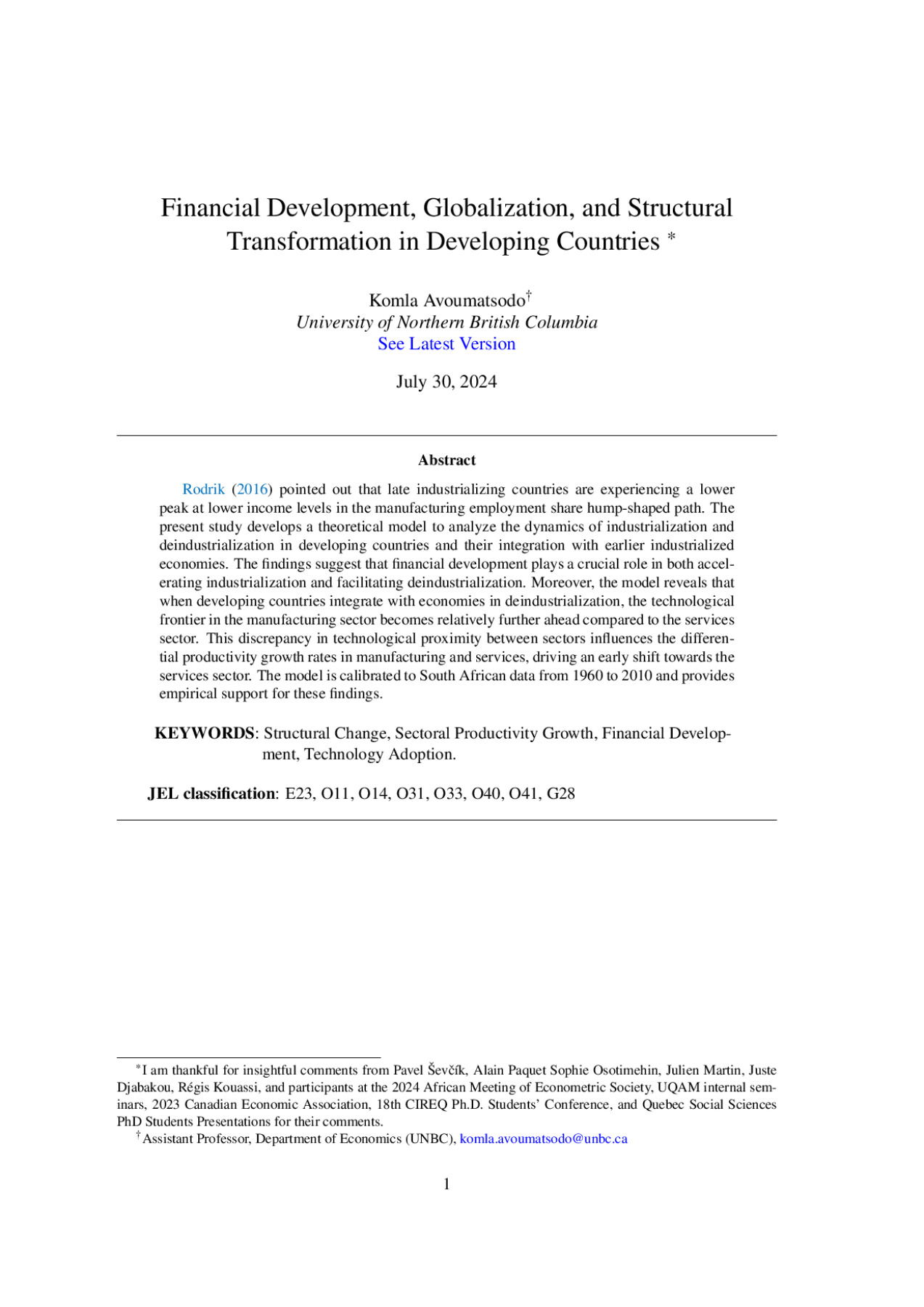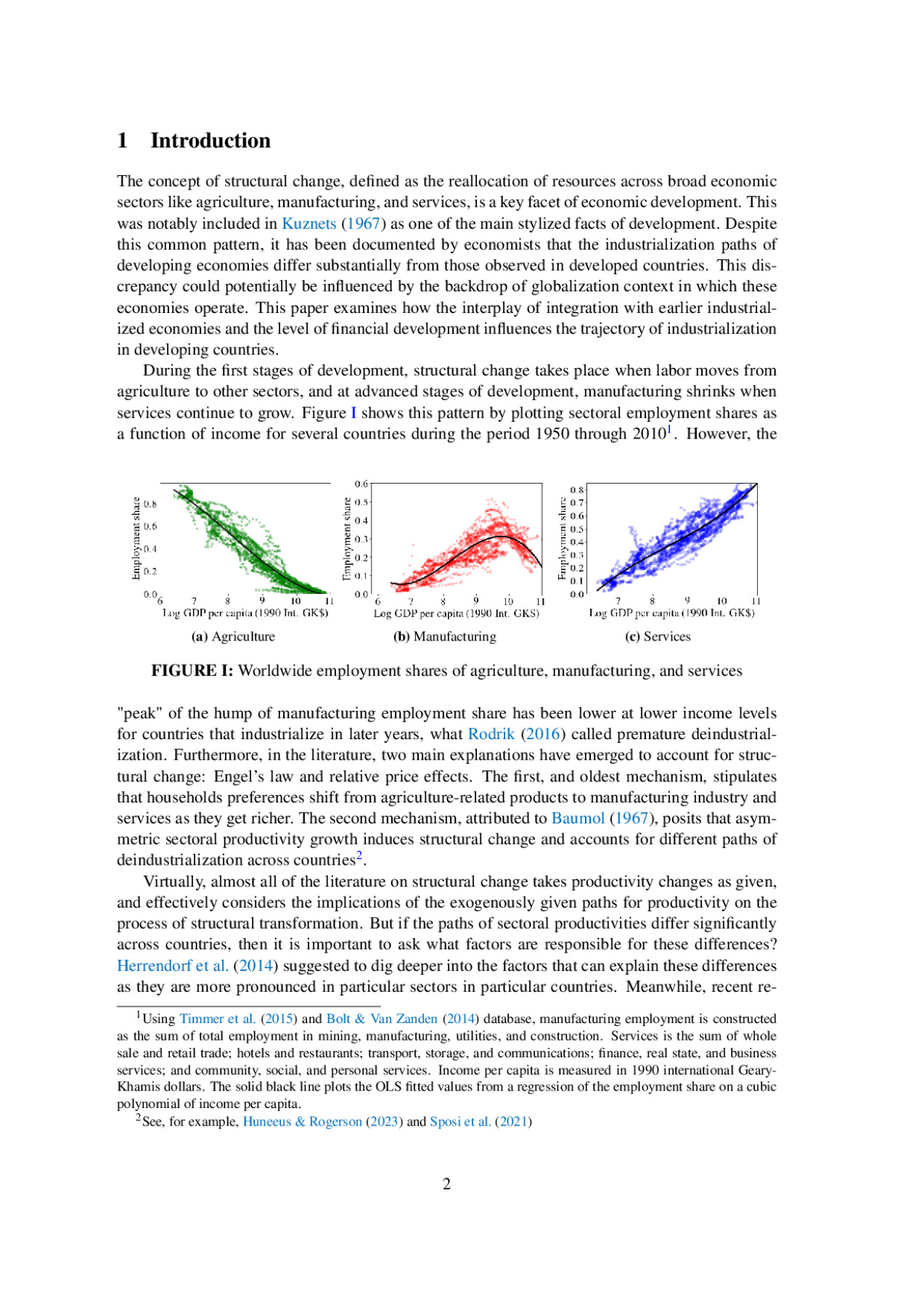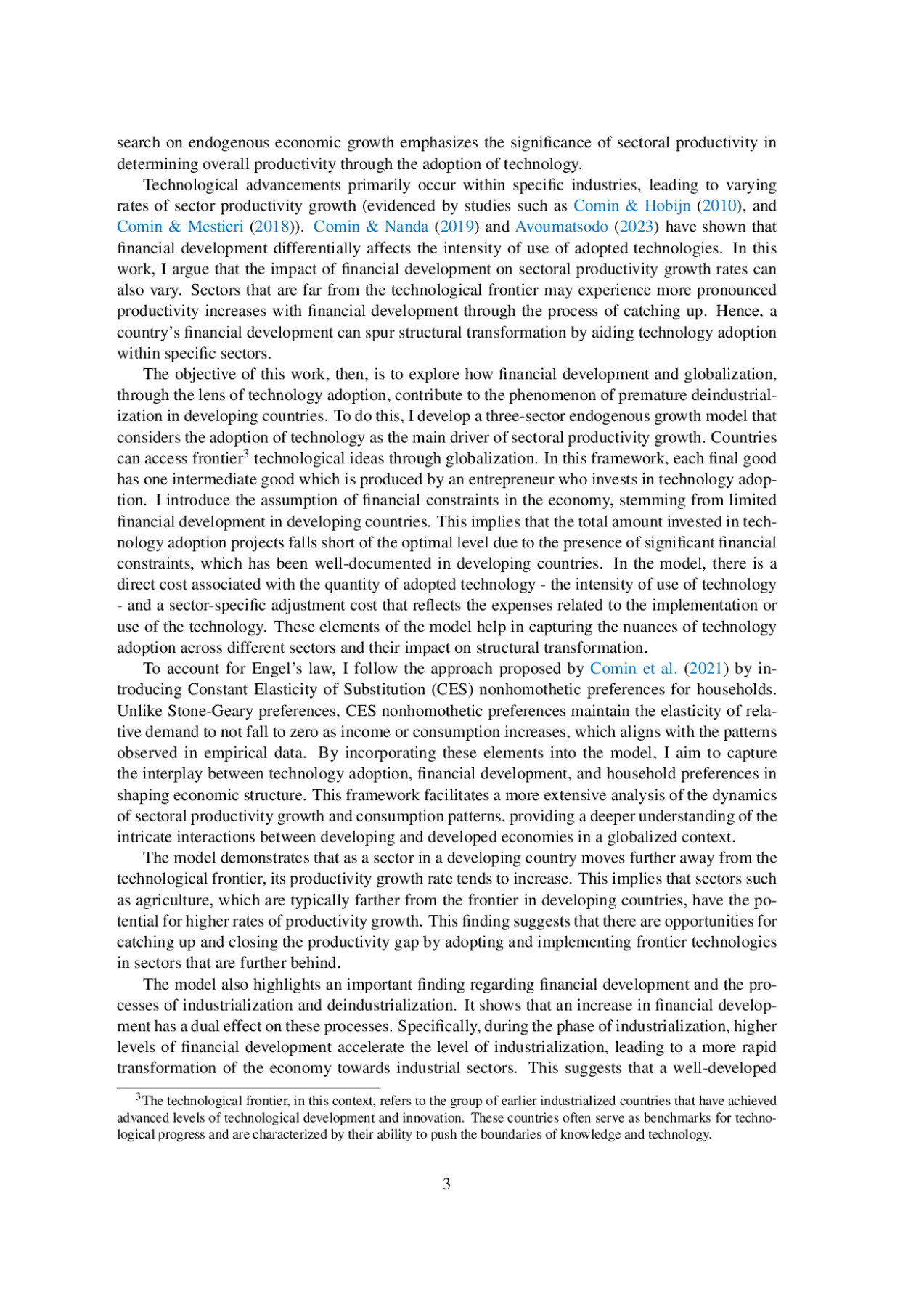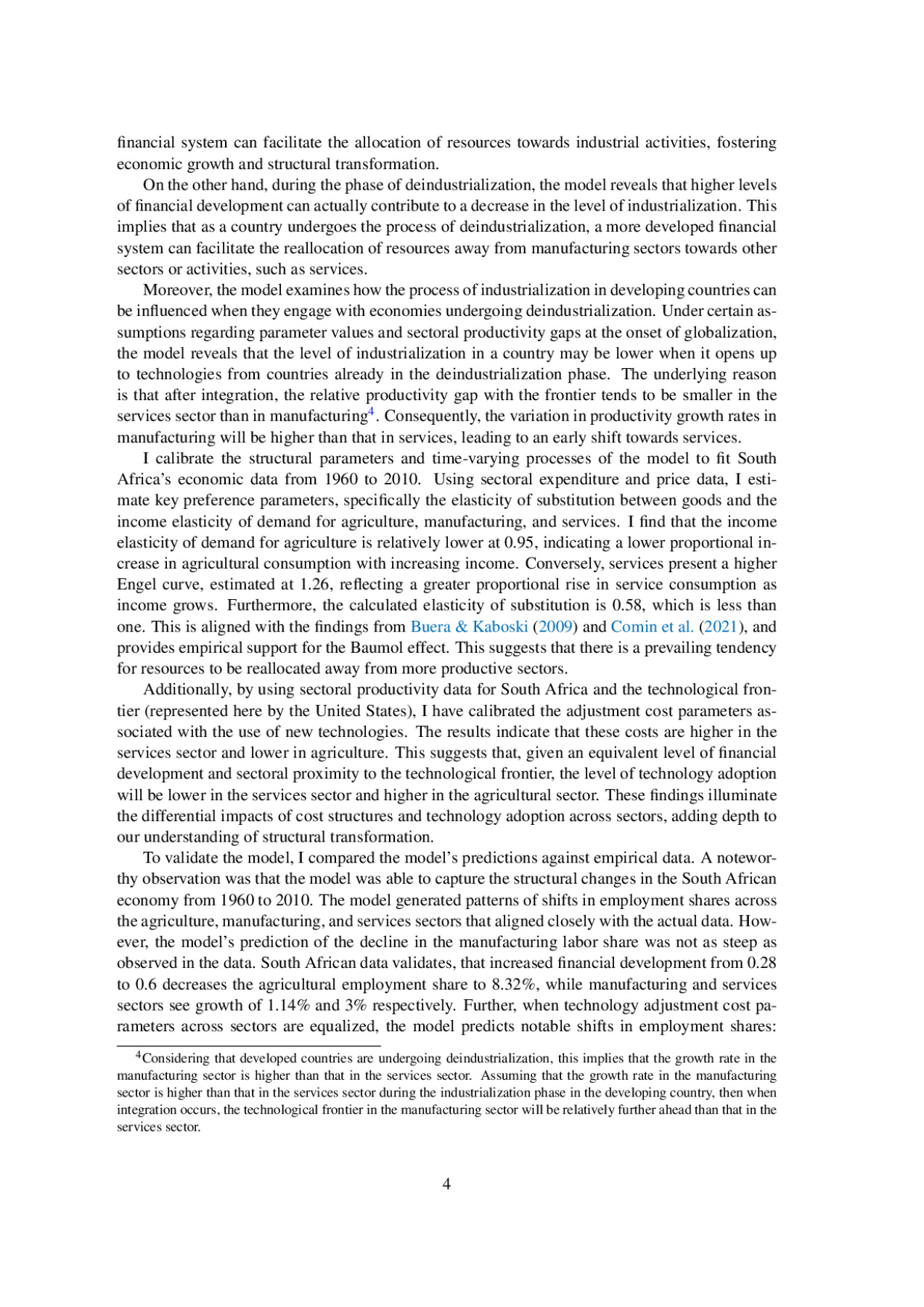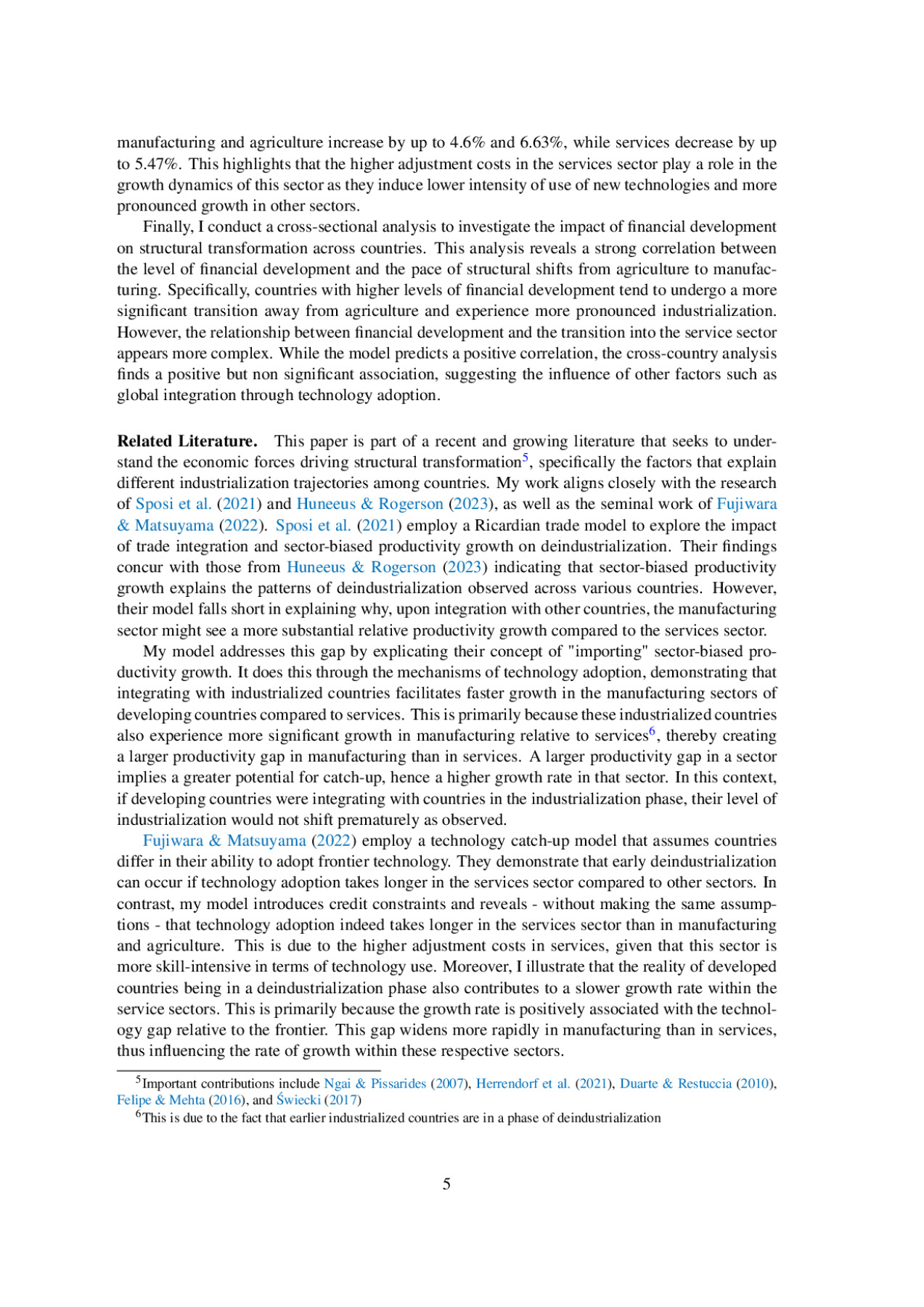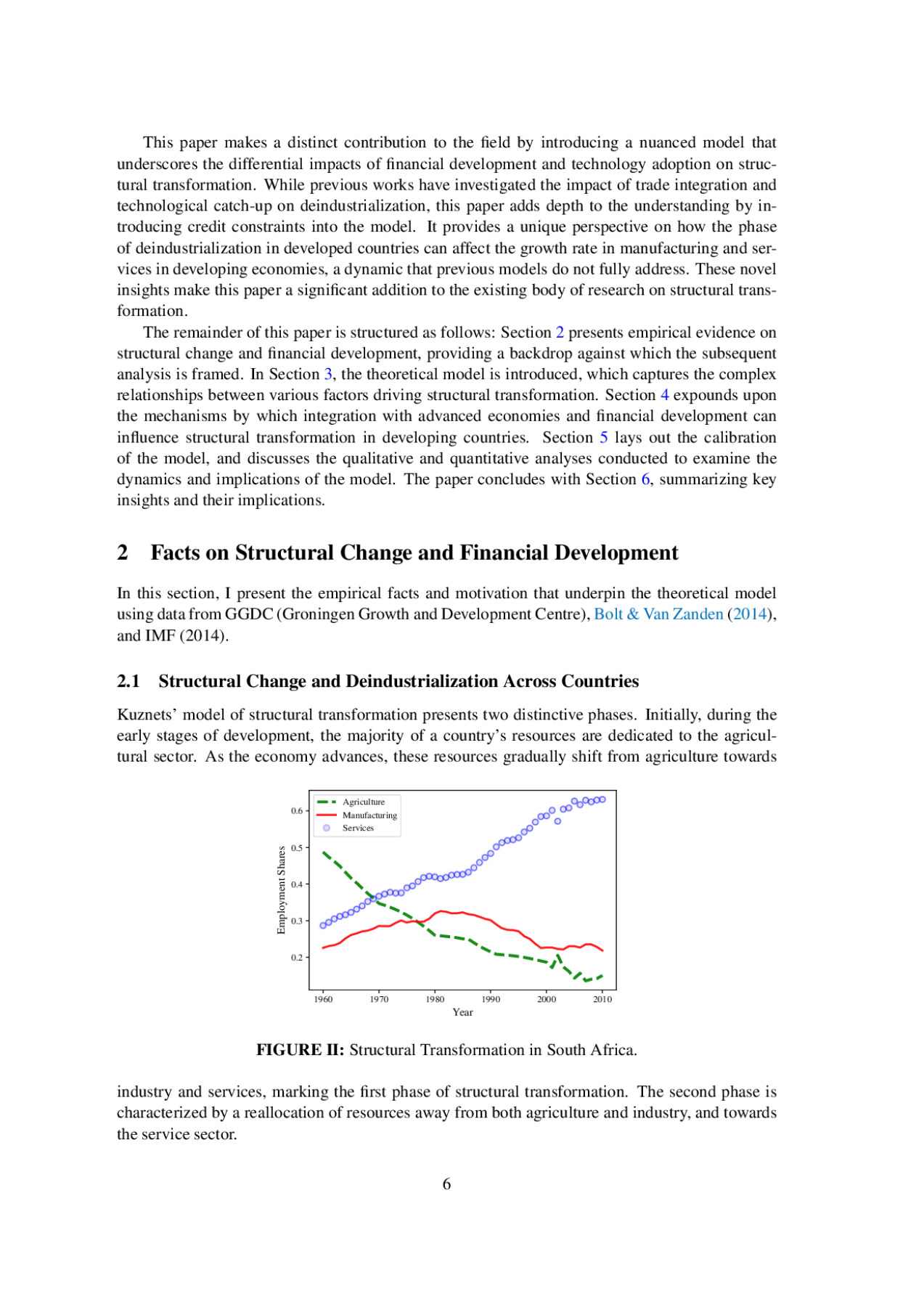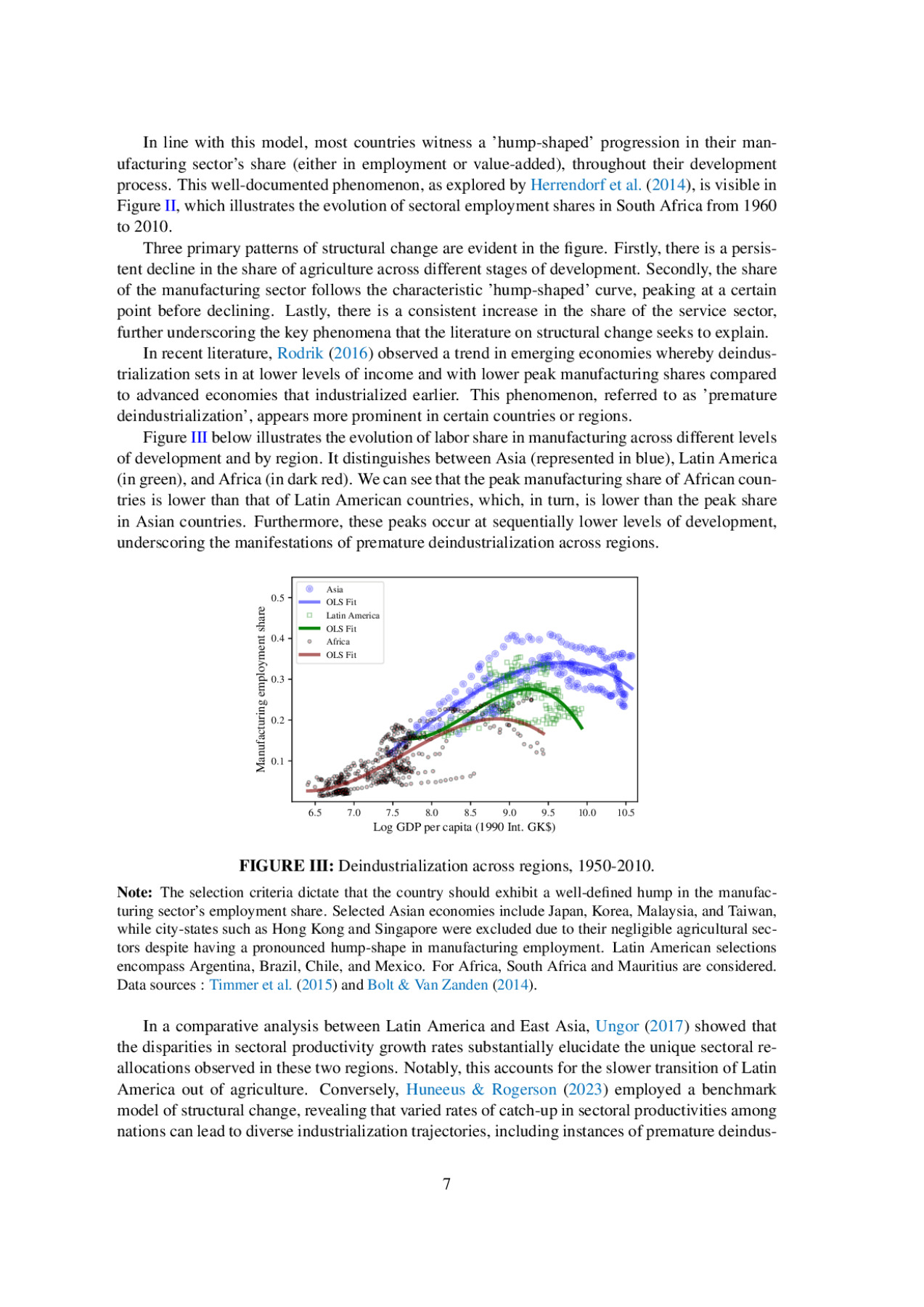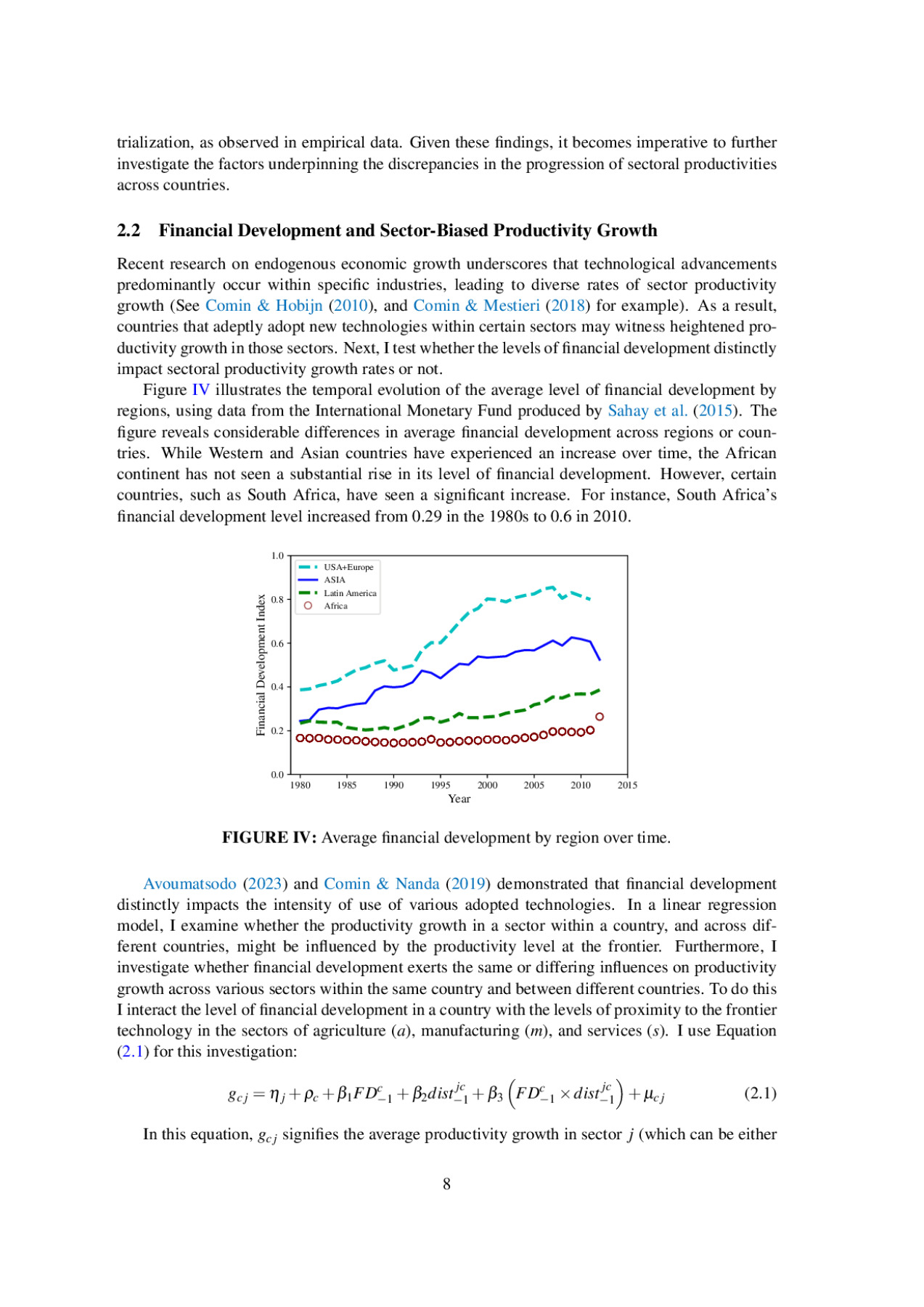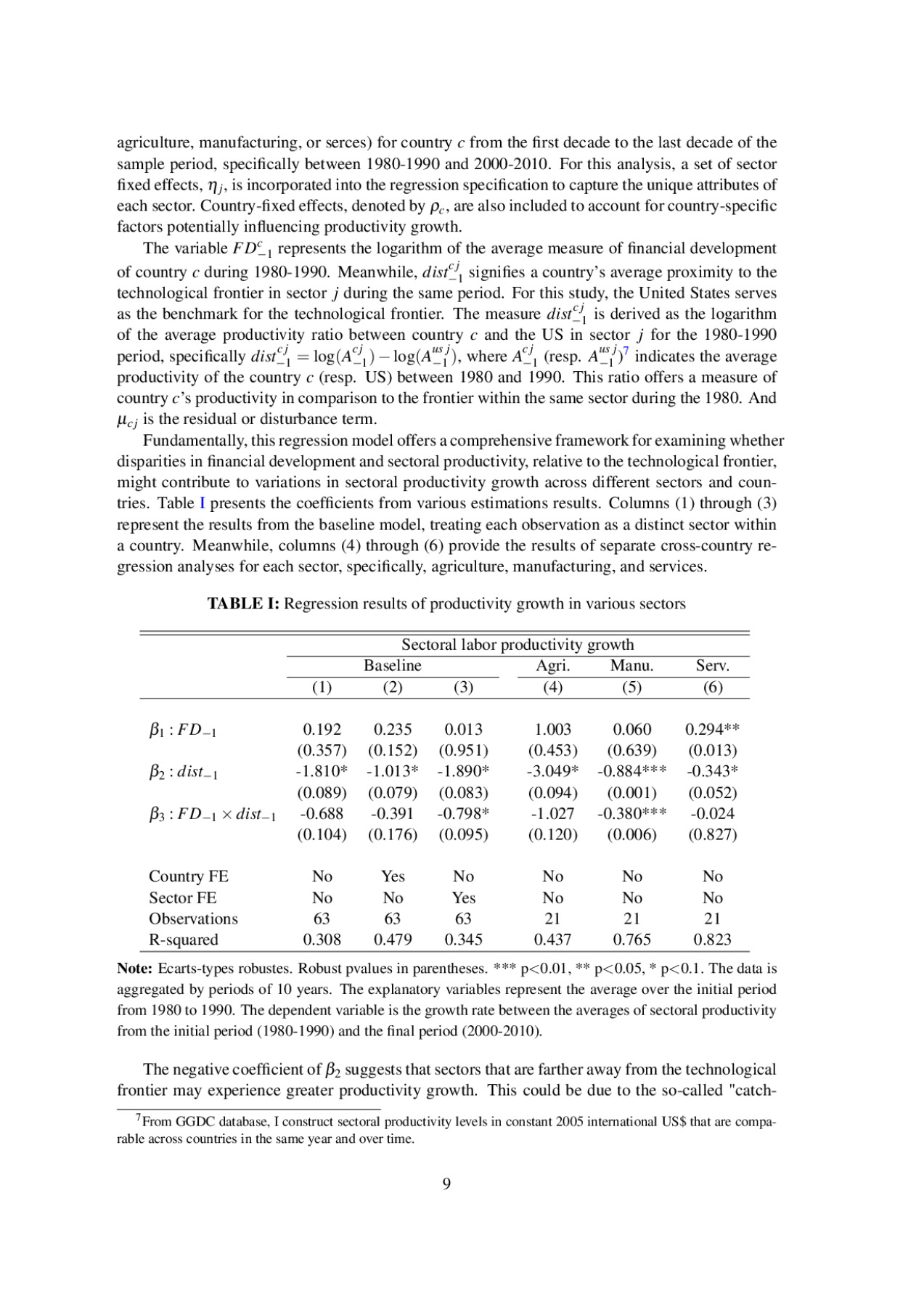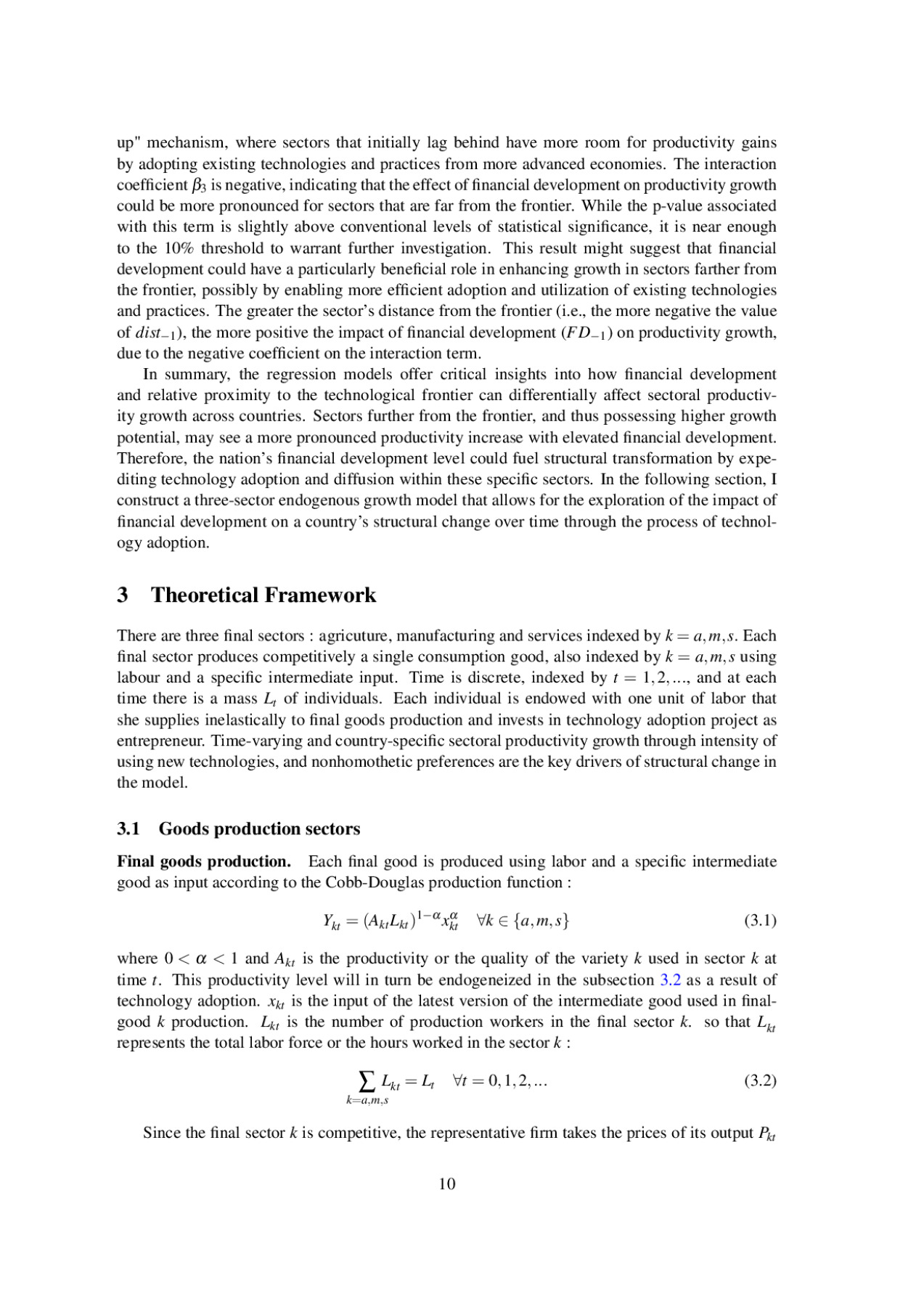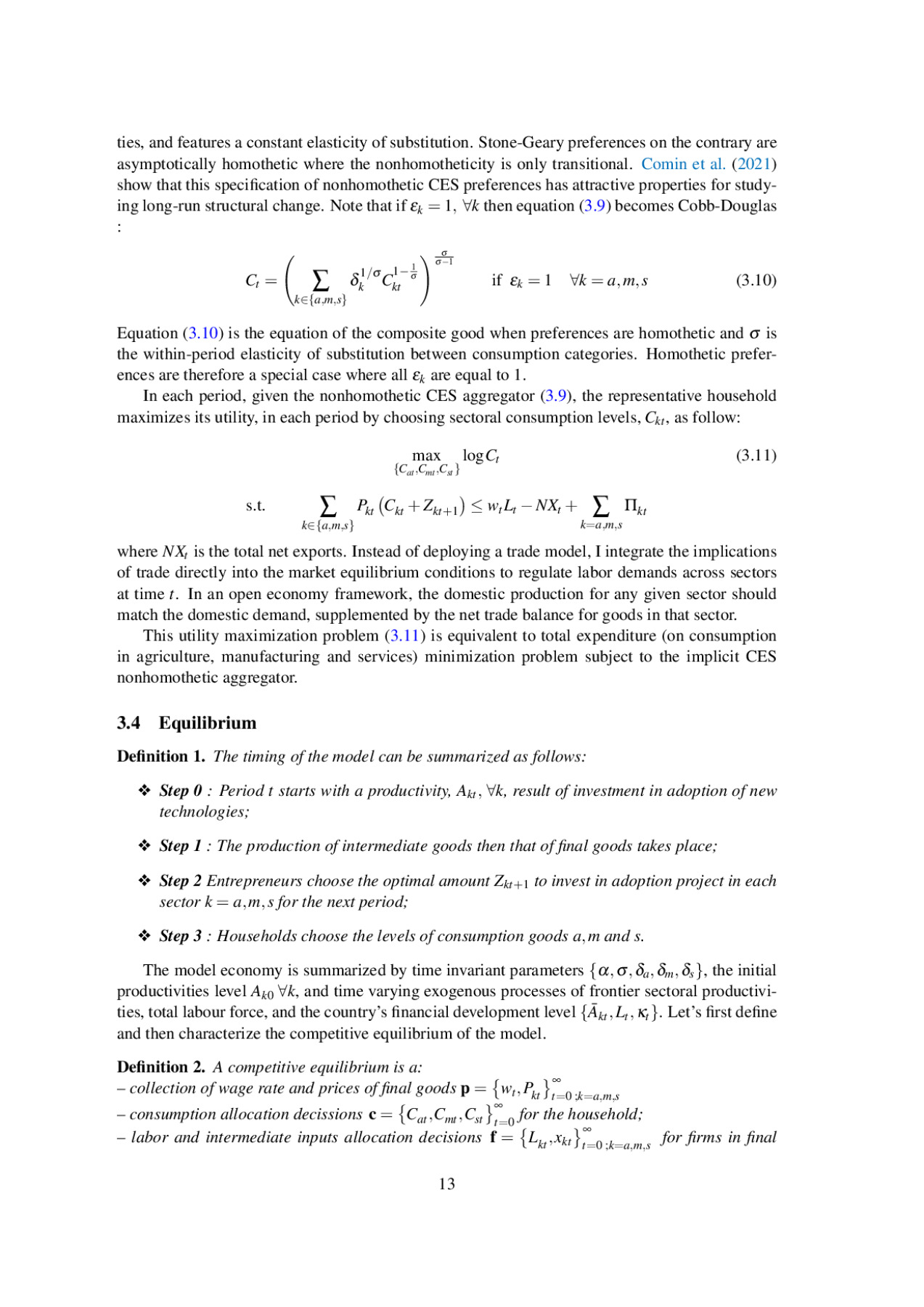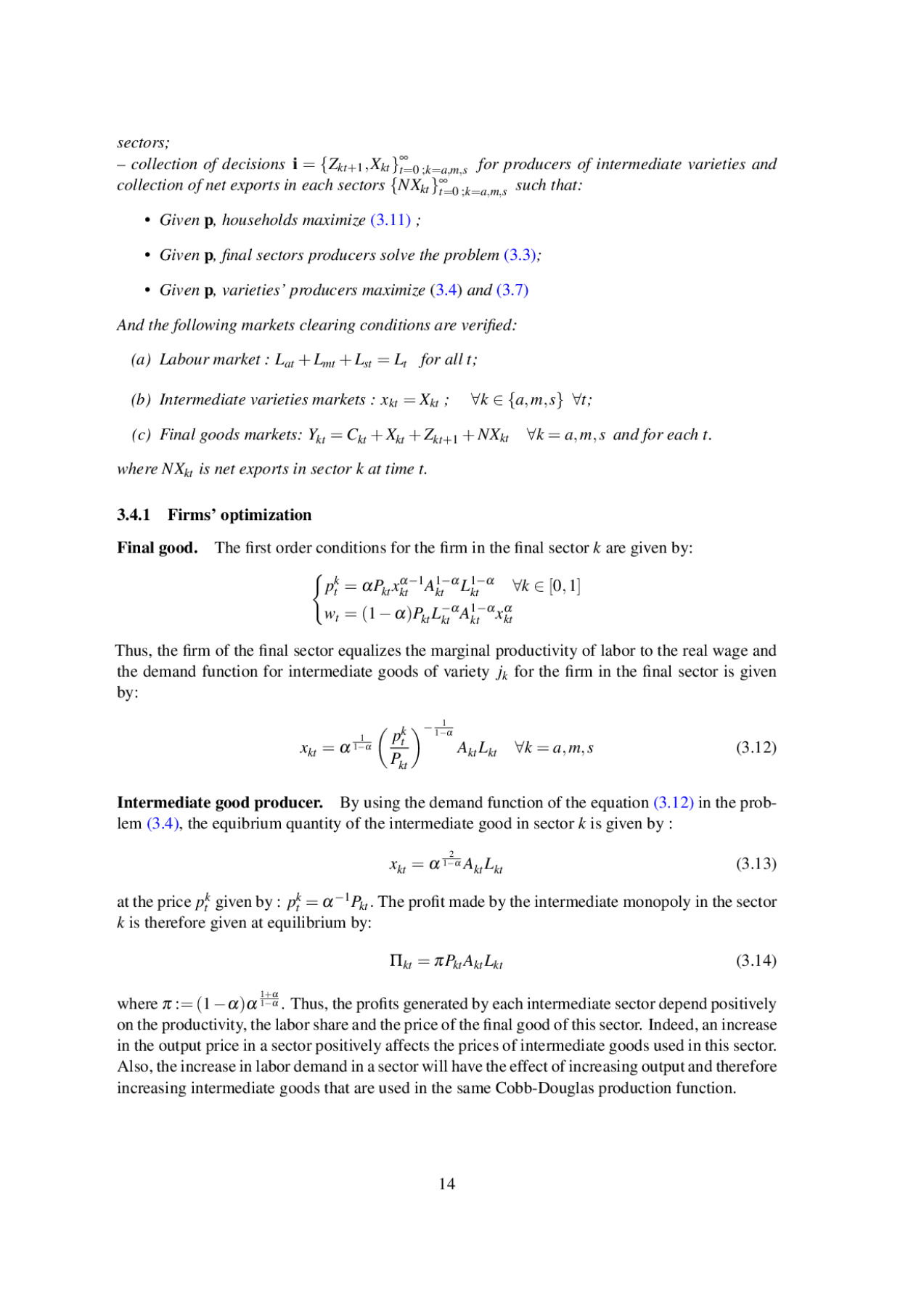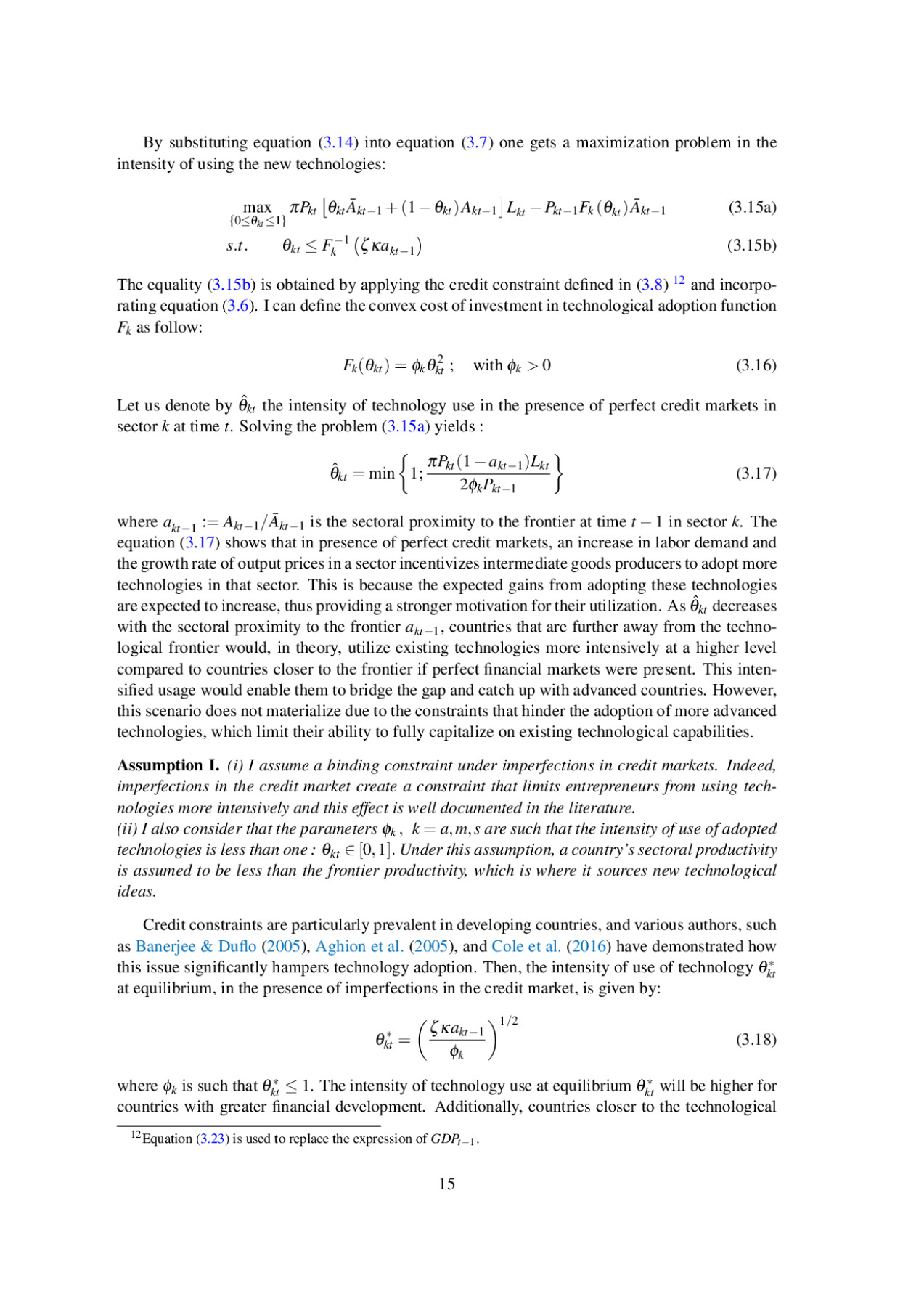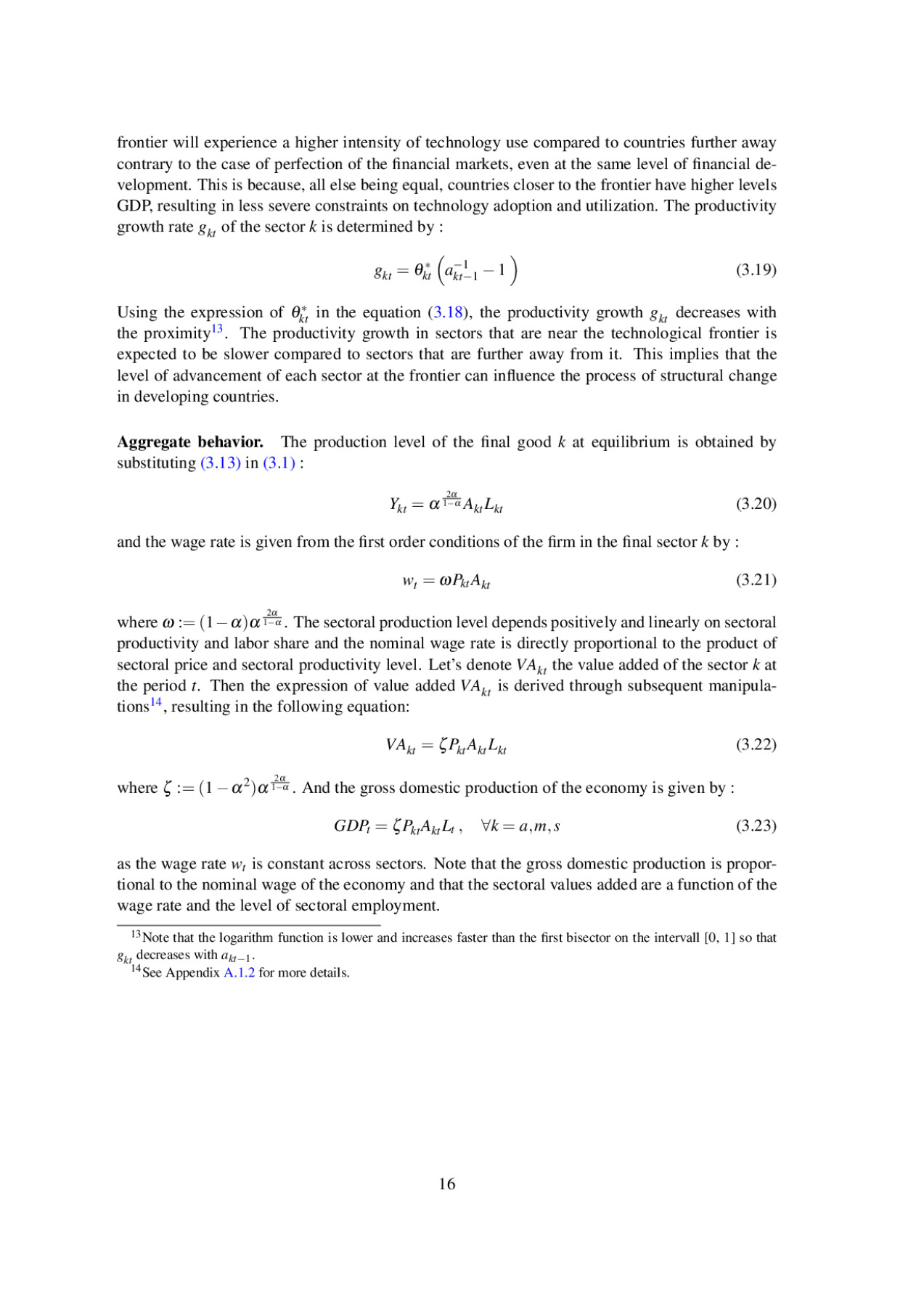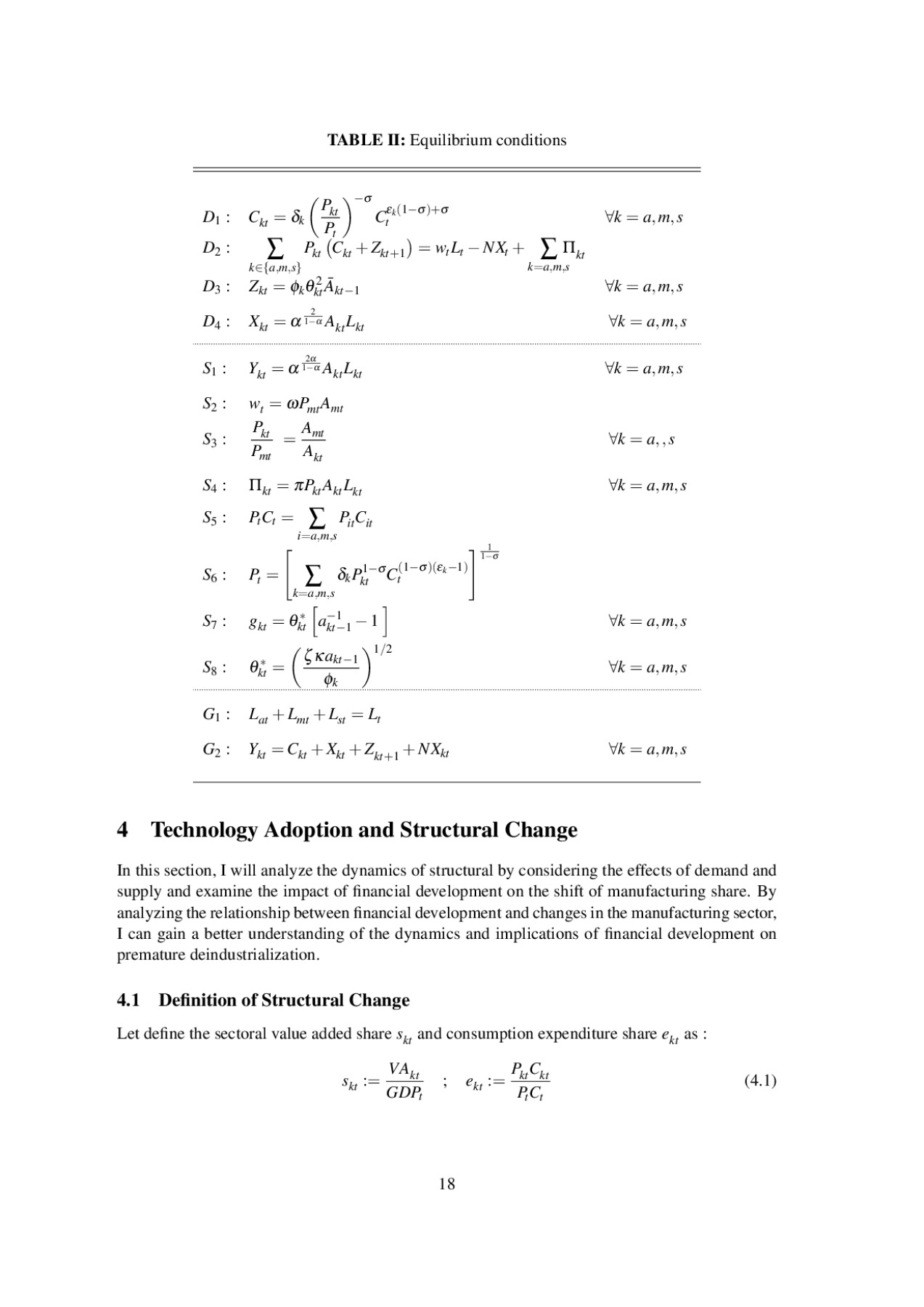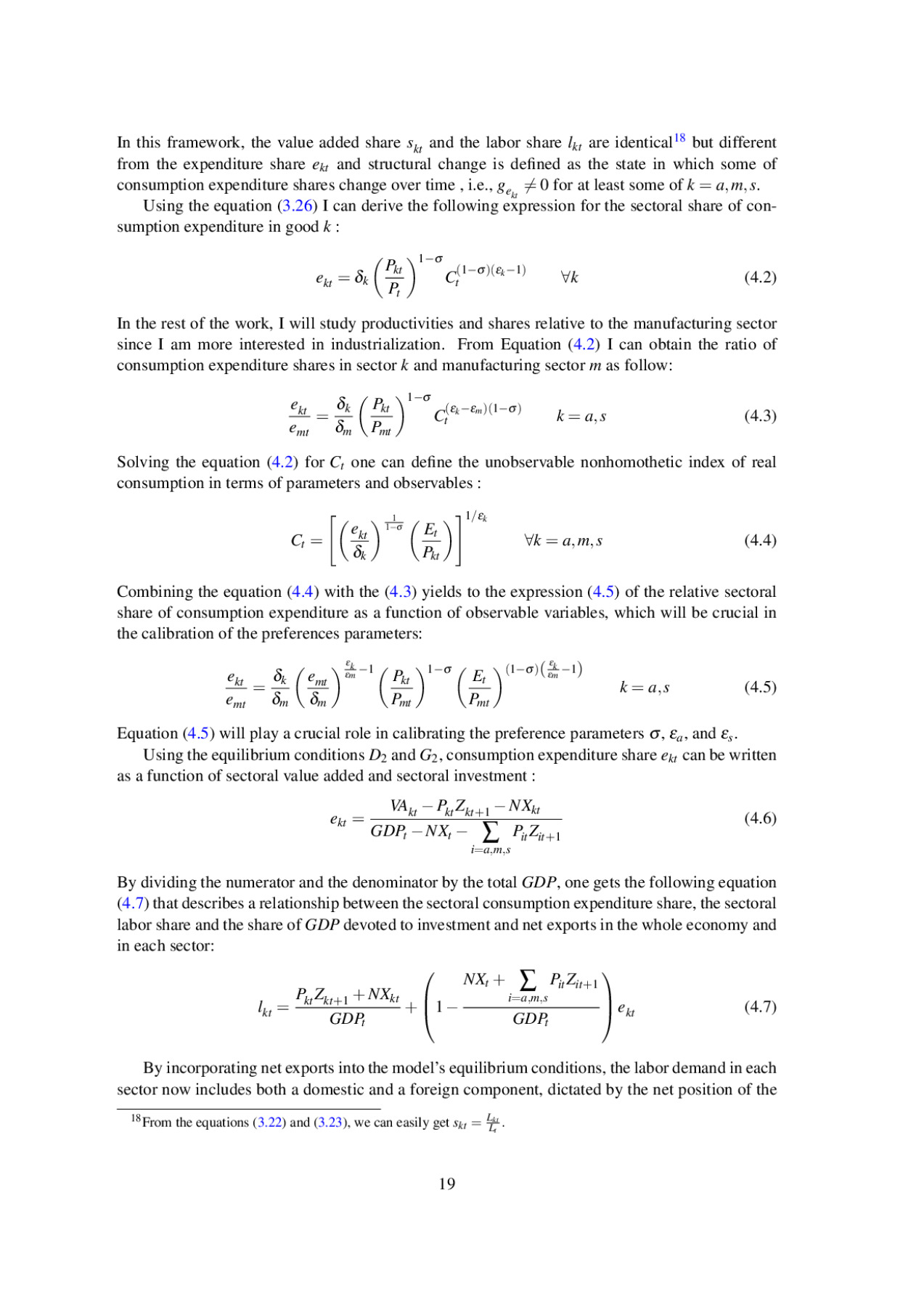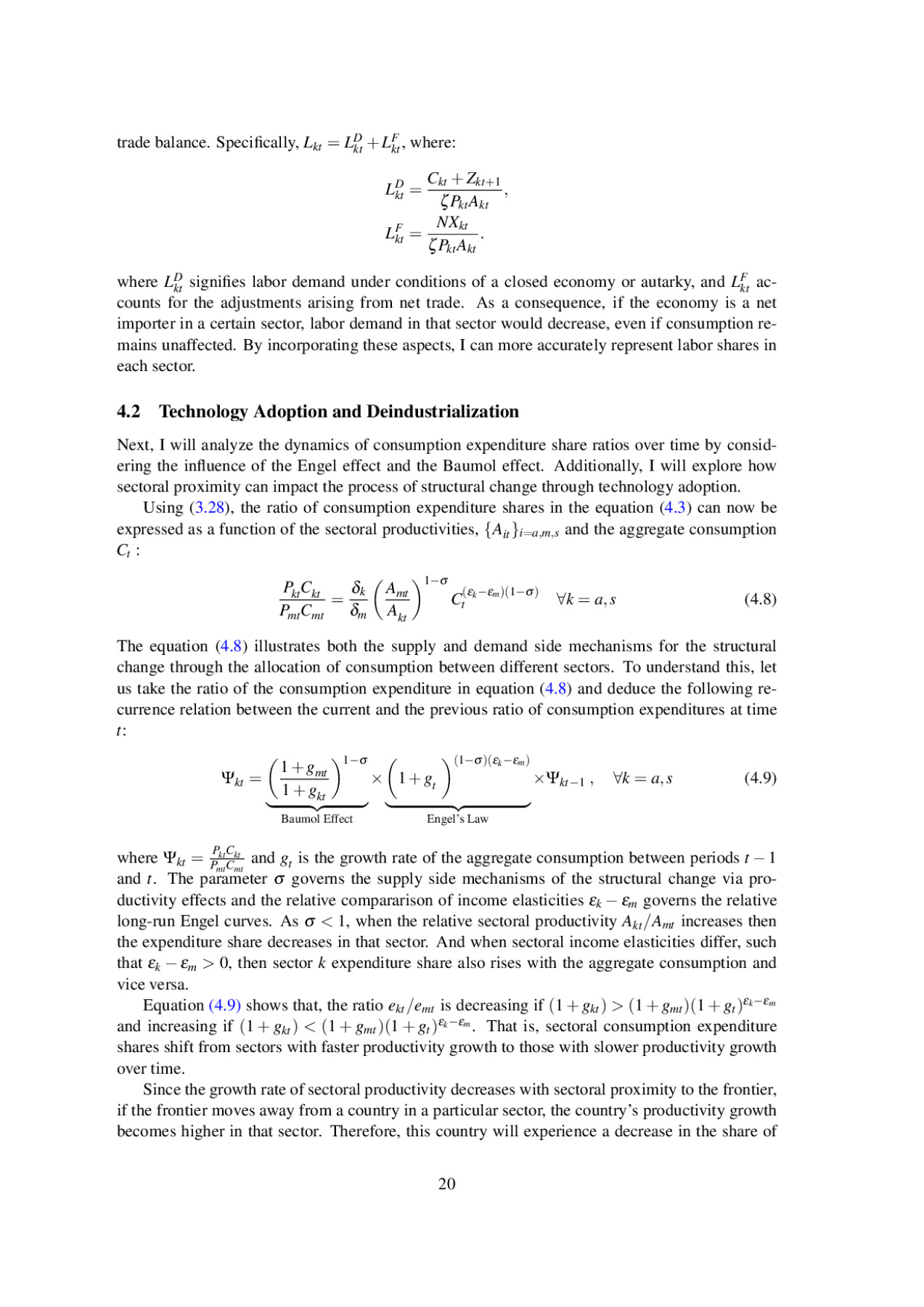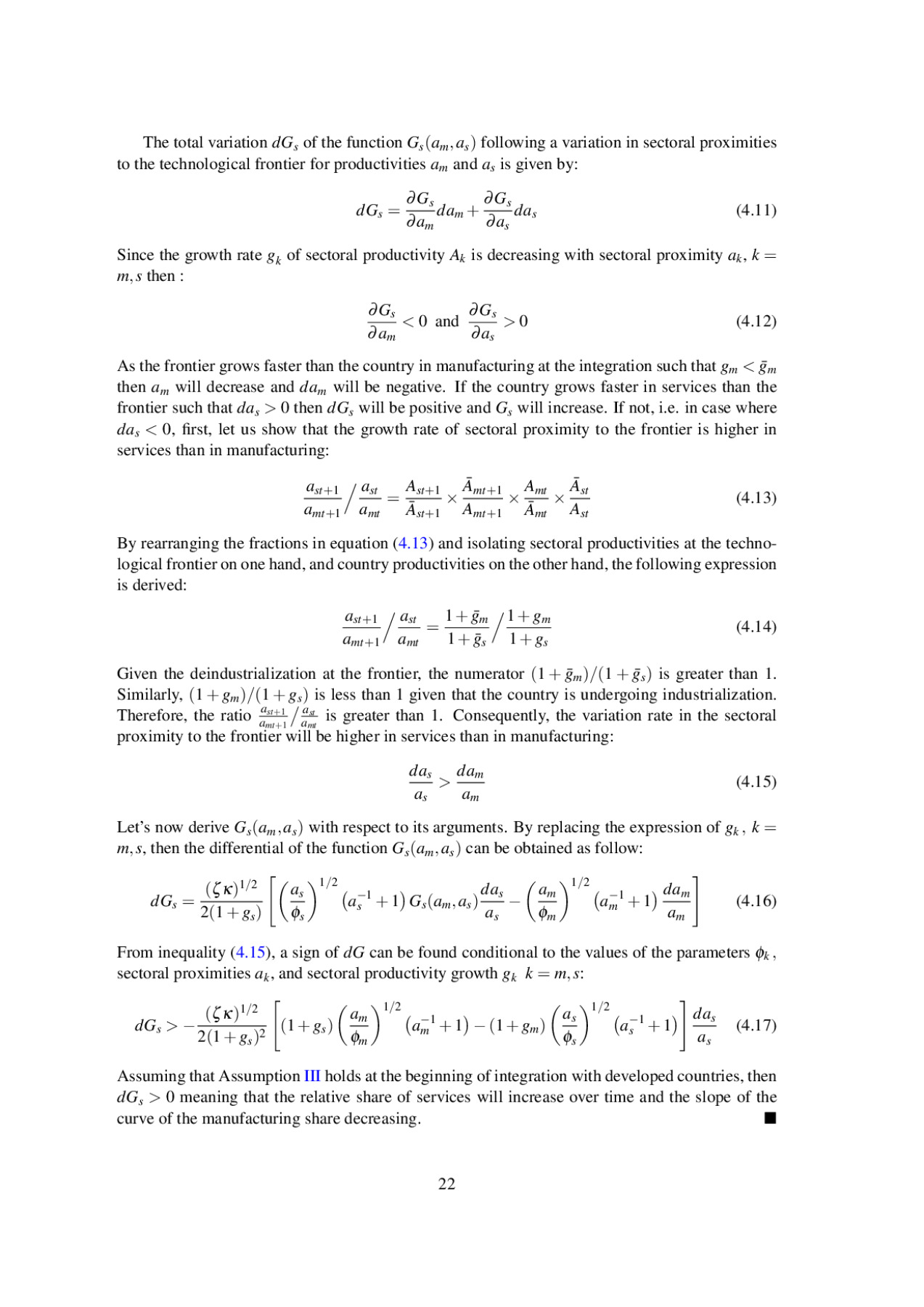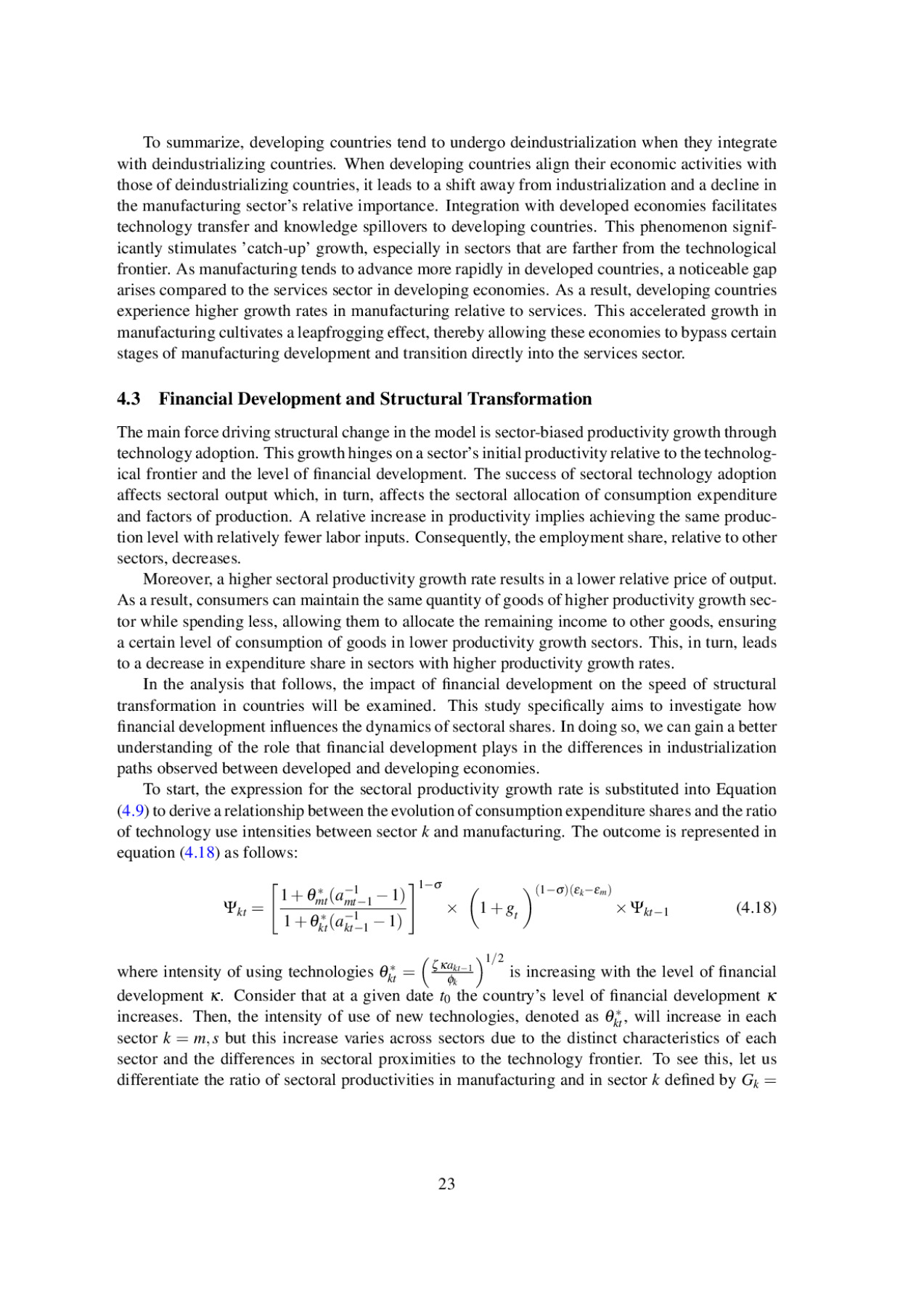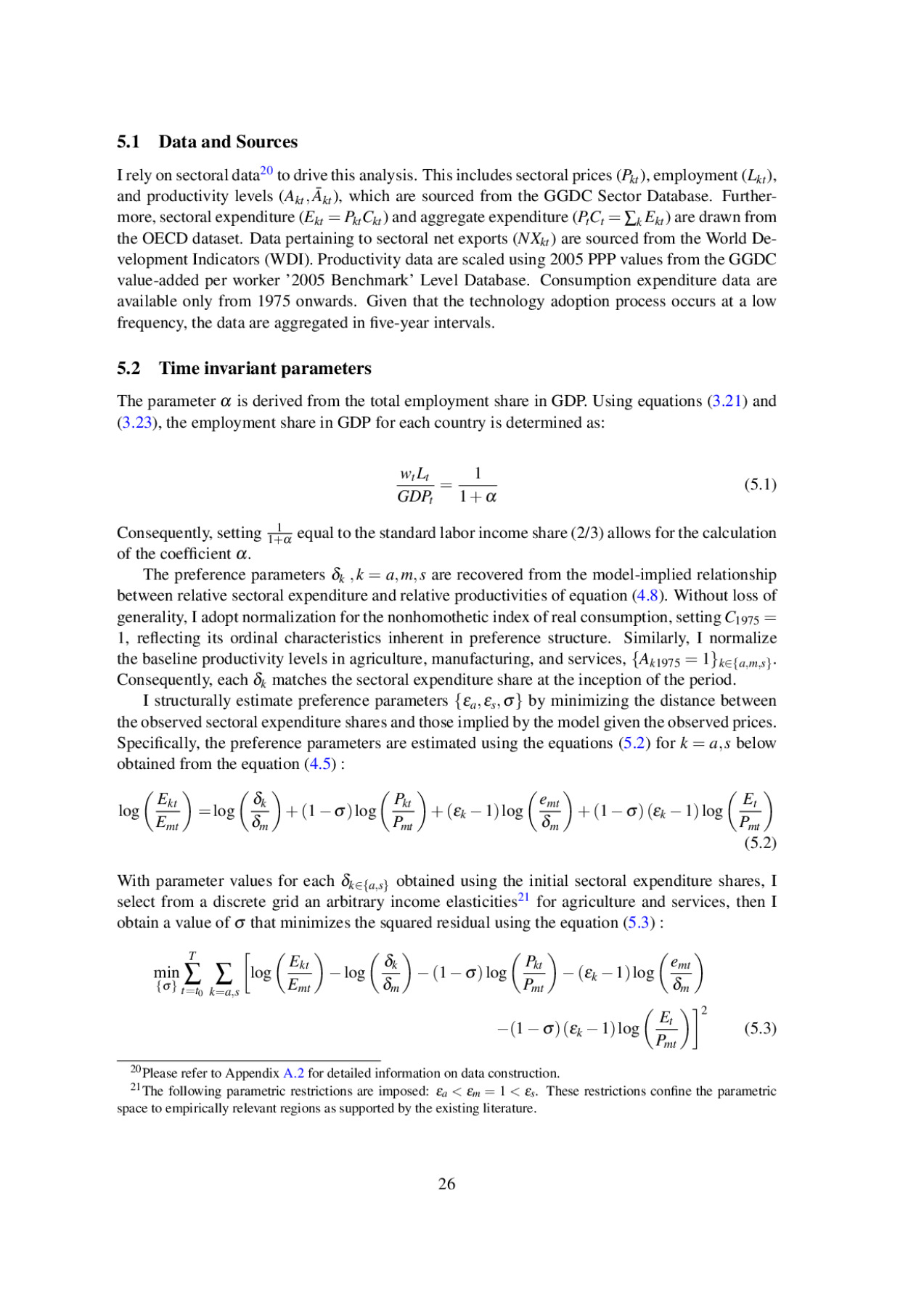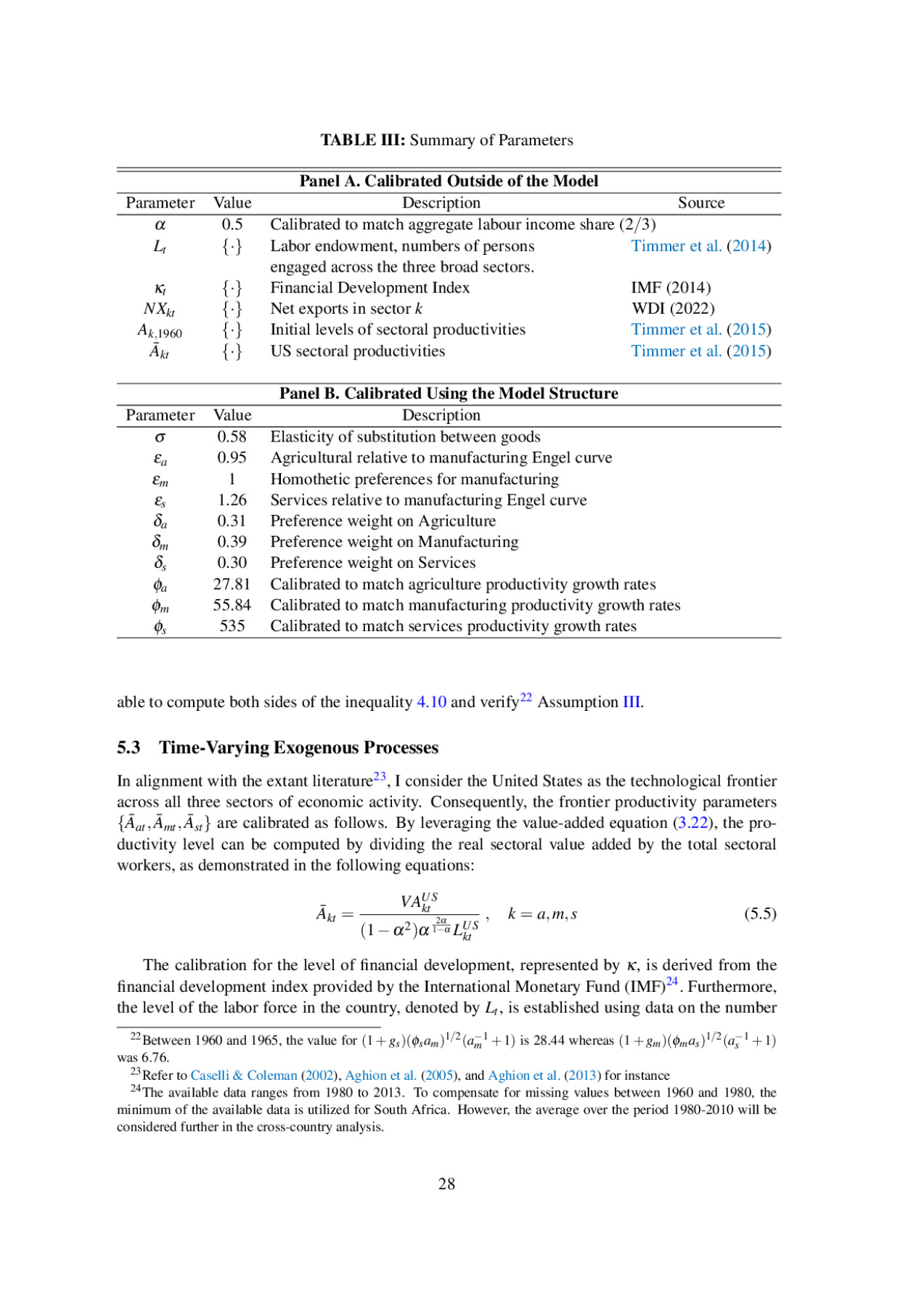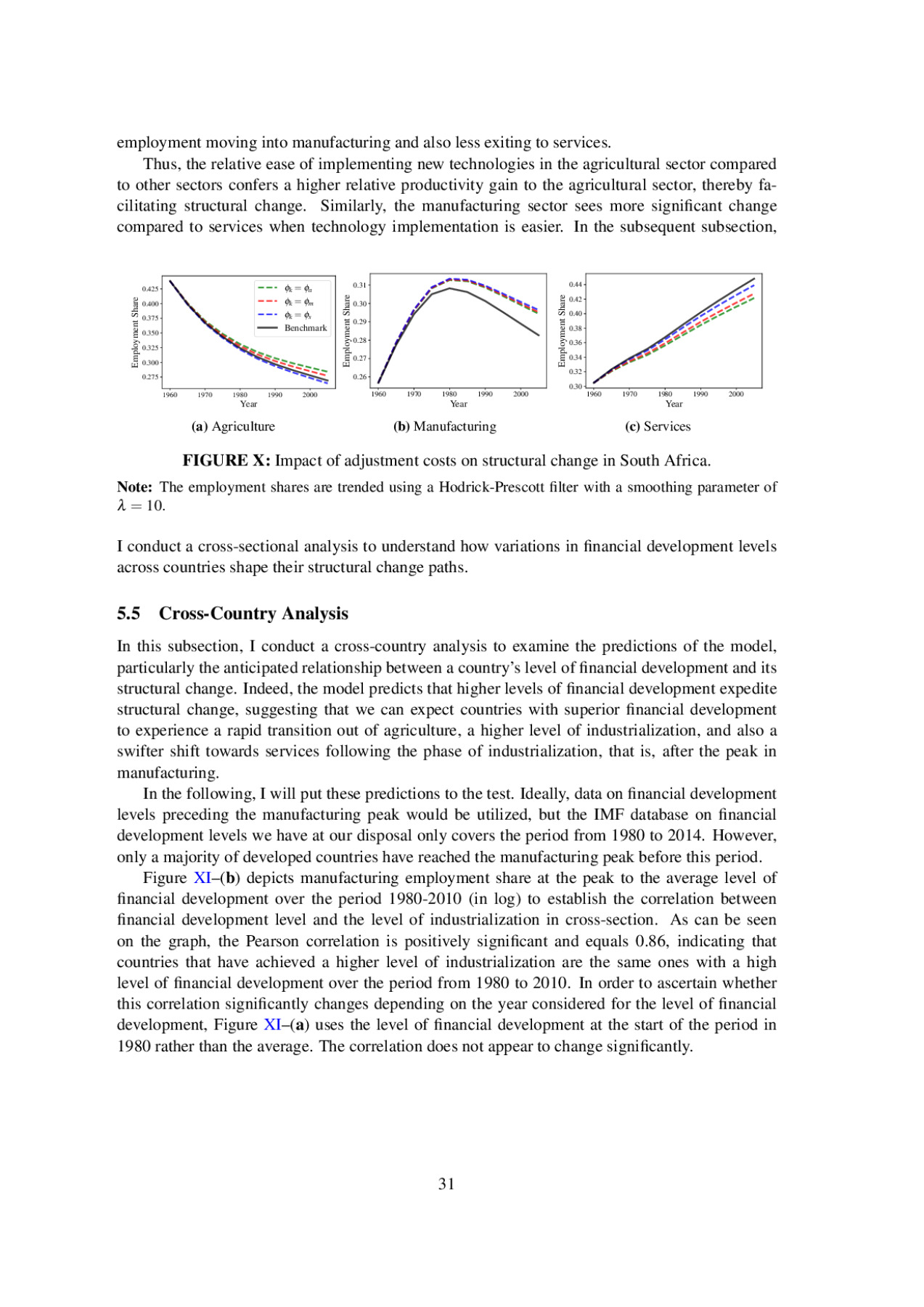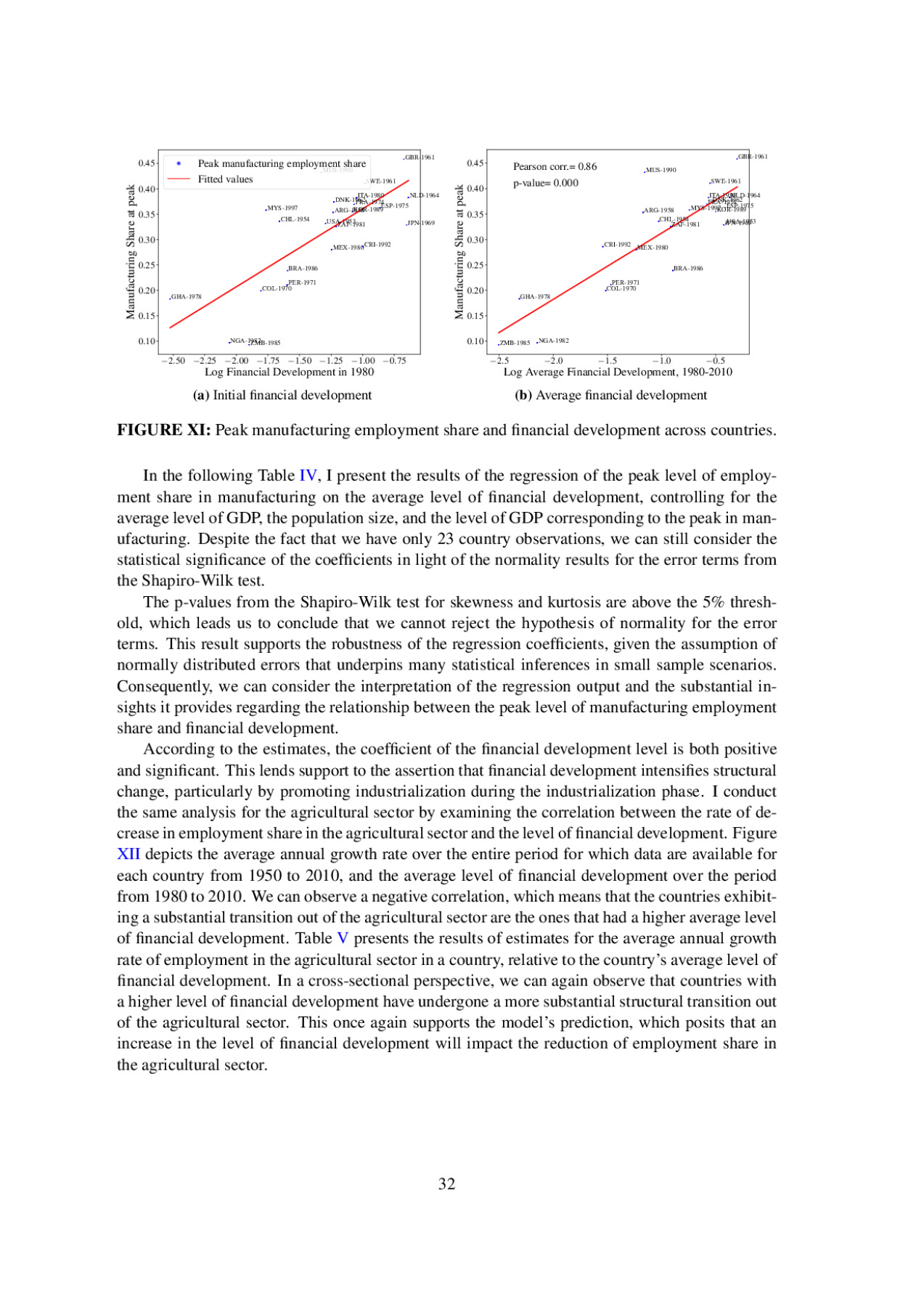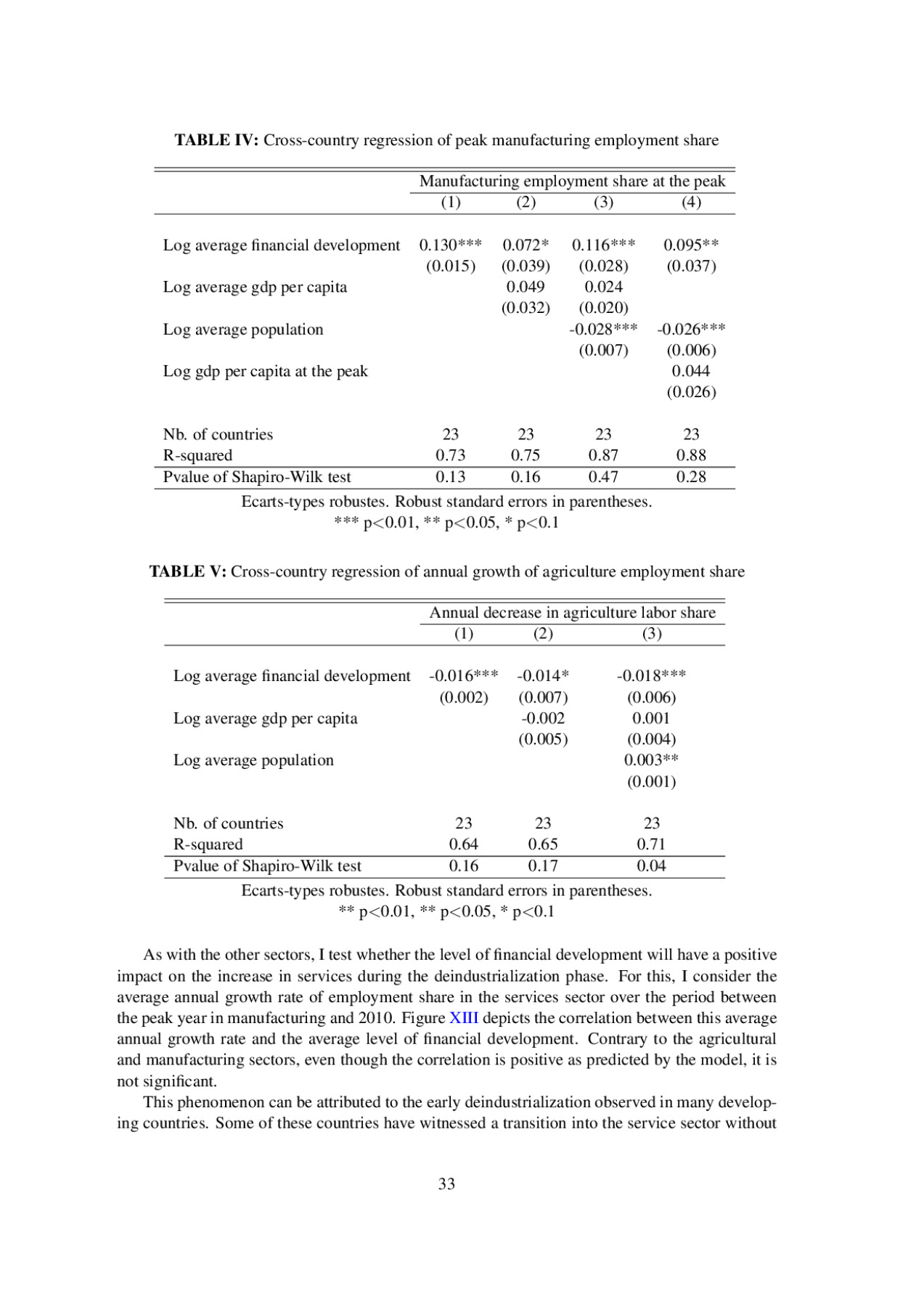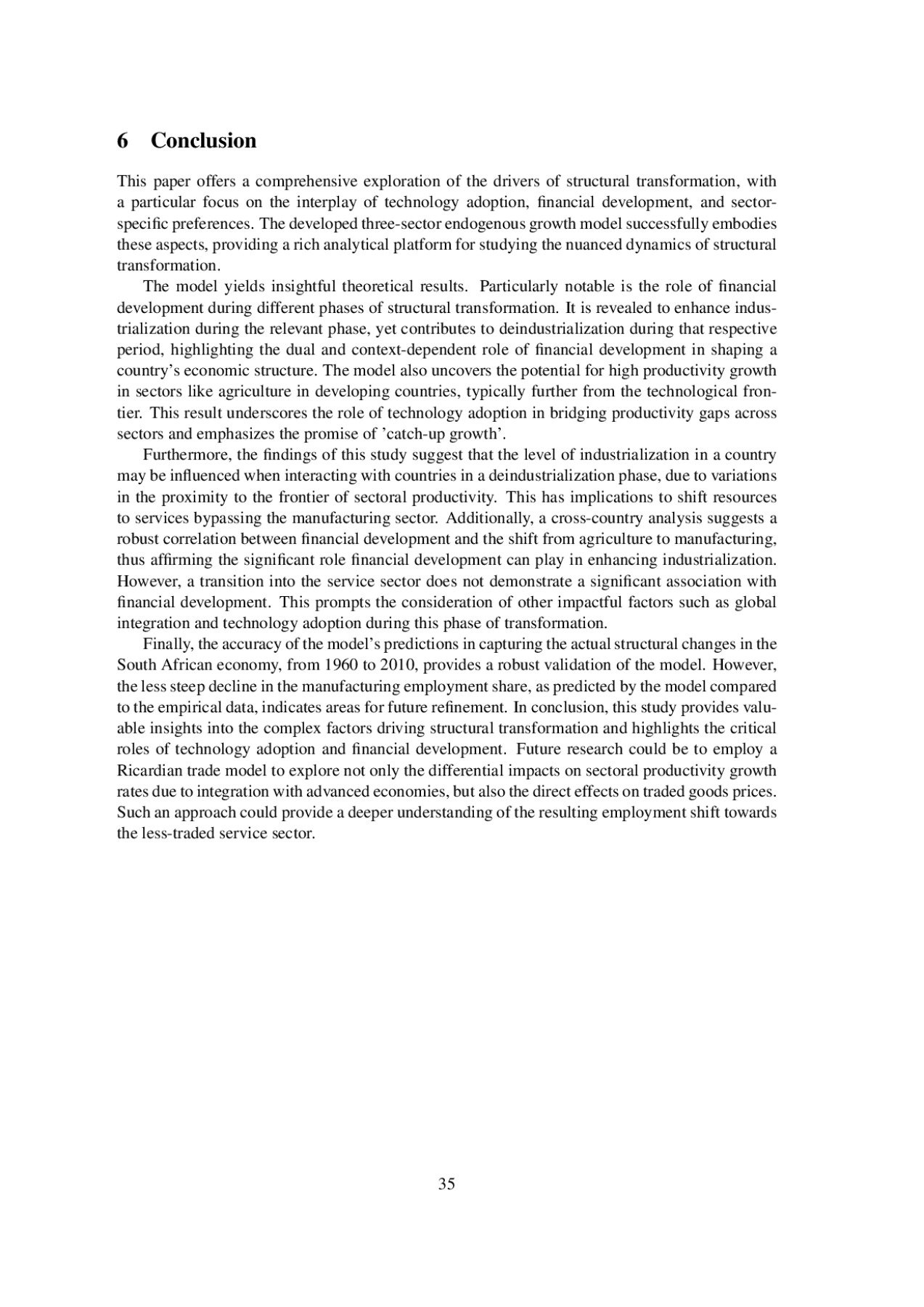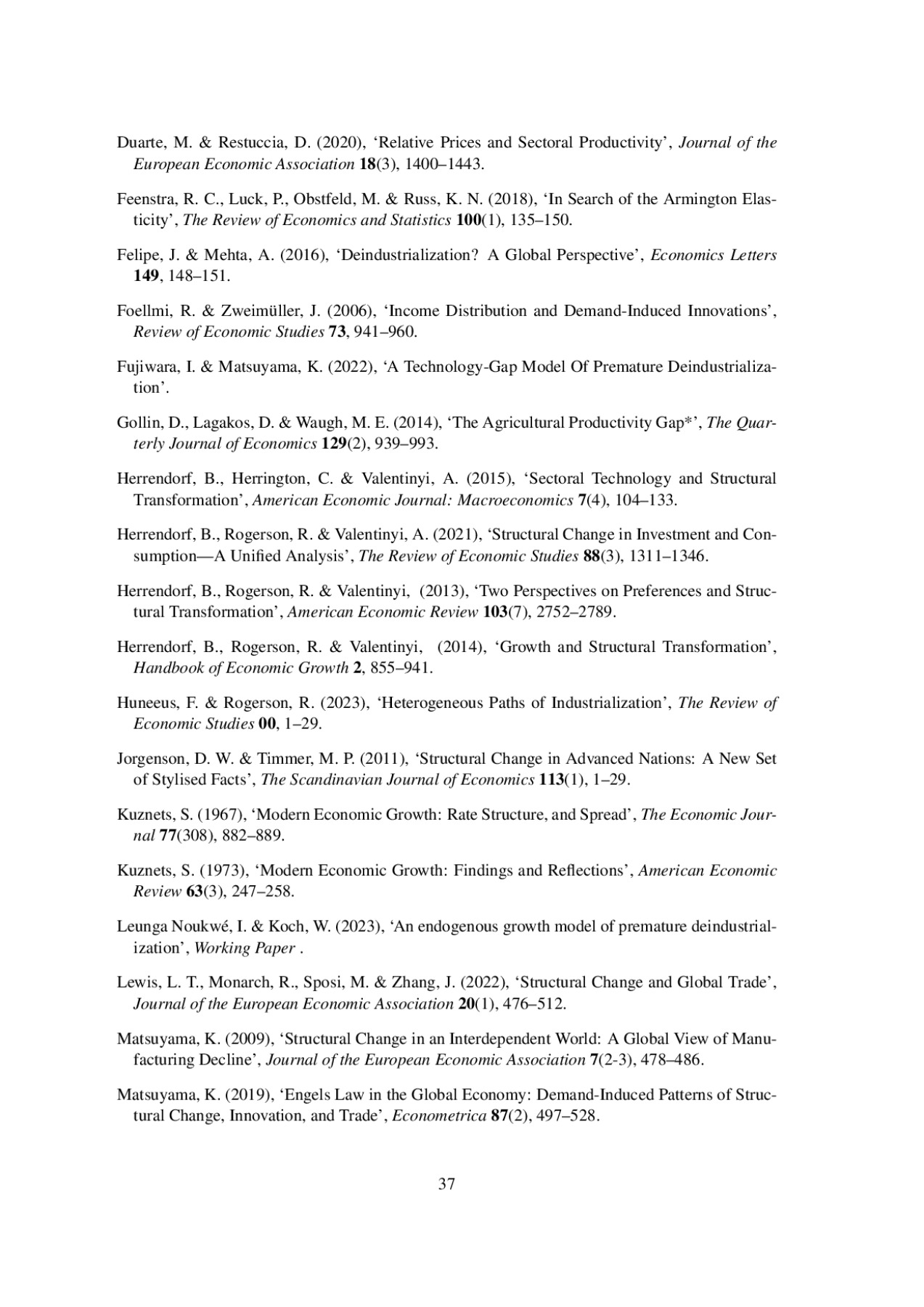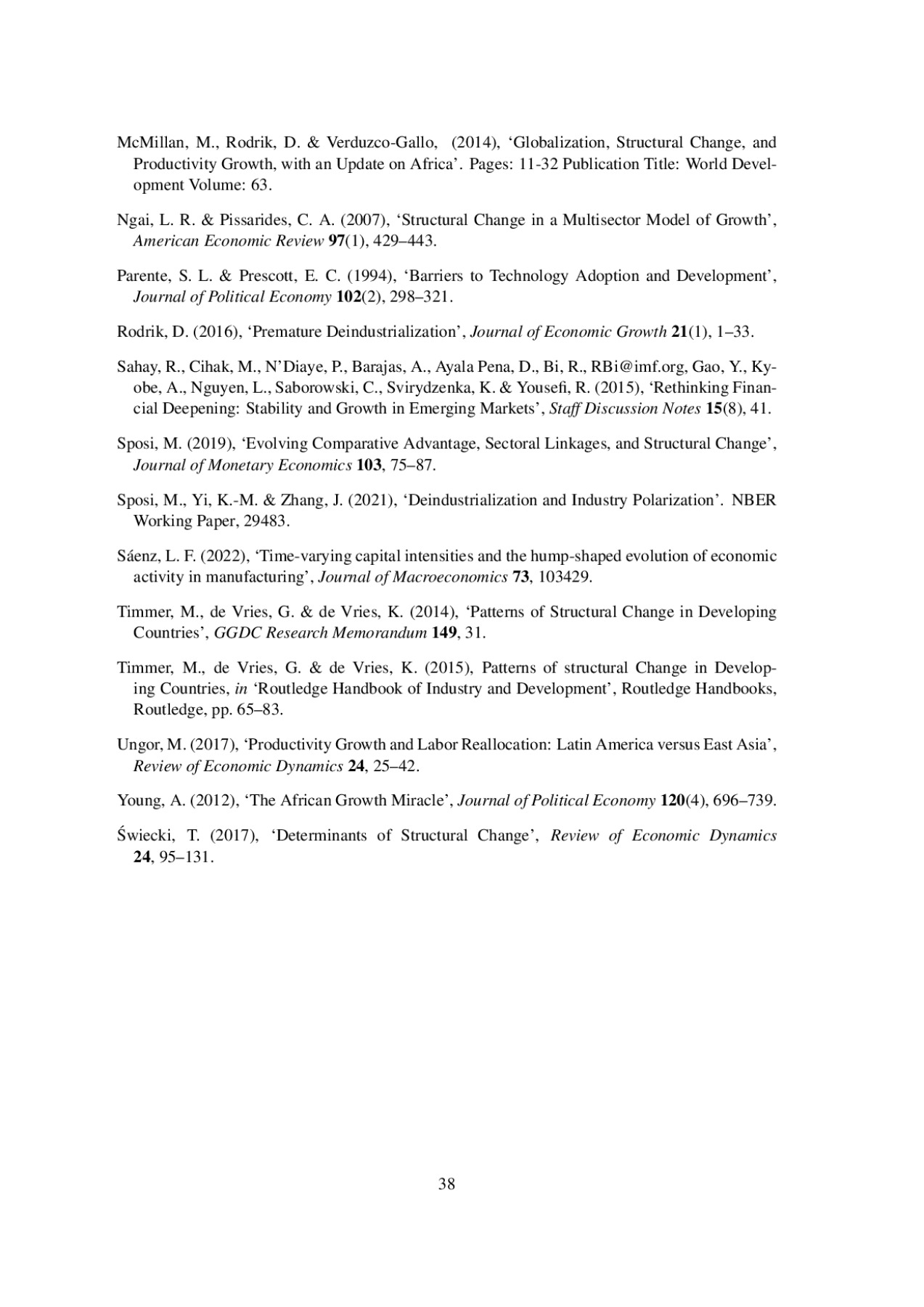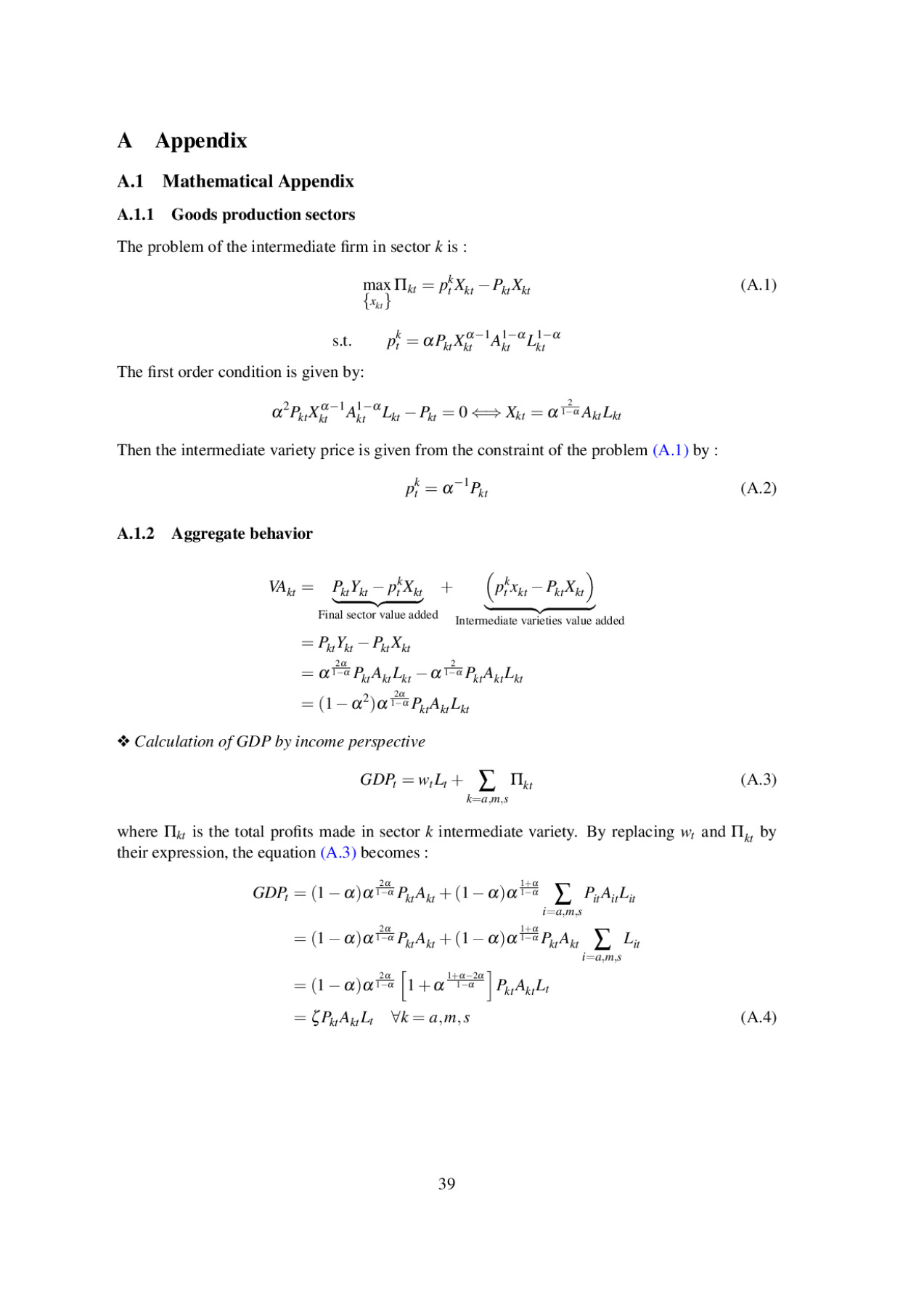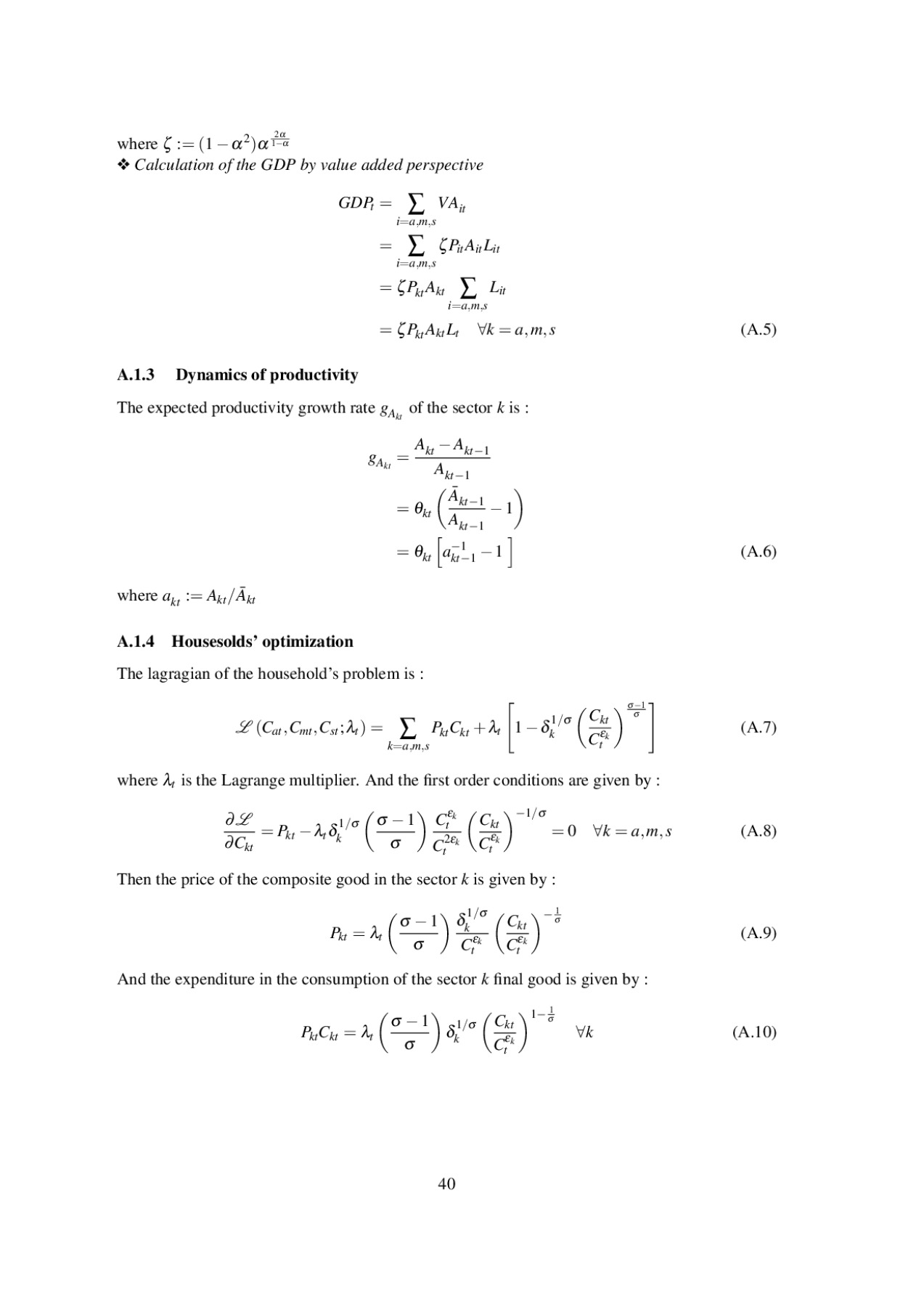2024 African Meeting, Abidjan, Côte d'Ivoire : June, 2024
Financial Development, Globalization, and Structural Transformation in Developing Countries
Komla Avoumatsodo
Rodrik (2016) pointed out that late industrializing countries are experiencing a lower
peak at lower income levels in the manufacturing employment share hump-shaped path. The
present study develops a theoretical model to analyze the dynamics of industrialization and
deindustrialization in developing countries and their integration with earlier industrialized
economies. The findings suggest that financial development plays a crucial role in both accelerating
industrialization and facilitating deindustrialization. Moreover, the model reveals that
when developing countries integrate with economies in deindustrialization, the technological
frontier in the manufacturing sector becomes relatively further ahead compared to the services
sector. This discrepancy in technological proximity between sectors influences the differential
productivity growth rates in manufacturing and services, driving an early shift towards the
services sector. The model is calibrated to South African data from 1960 to 2010 and provides
empirical support for these findings.
peak at lower income levels in the manufacturing employment share hump-shaped path. The
present study develops a theoretical model to analyze the dynamics of industrialization and
deindustrialization in developing countries and their integration with earlier industrialized
economies. The findings suggest that financial development plays a crucial role in both accelerating
industrialization and facilitating deindustrialization. Moreover, the model reveals that
when developing countries integrate with economies in deindustrialization, the technological
frontier in the manufacturing sector becomes relatively further ahead compared to the services
sector. This discrepancy in technological proximity between sectors influences the differential
productivity growth rates in manufacturing and services, driving an early shift towards the
services sector. The model is calibrated to South African data from 1960 to 2010 and provides
empirical support for these findings.
Versions available:
Preview
